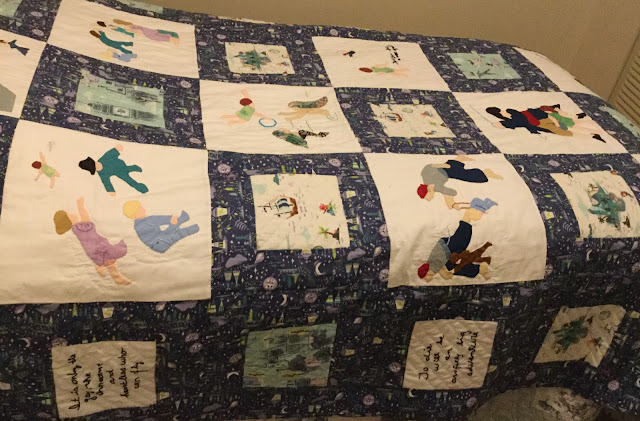In 2001 while I was browsing through a second-hand shop in south Lansing, Michigan, I came across a 1919 Stix, Baer & Fuller diary. I picked the book up and was amazed to see it was completely filled with diary entries. After reading a few entries I was charmed by the writer.
 |
Helen Korngold, December 1919
22 years old. Taken in New York City. |
The December, 31 entry ended with the signature Helen Korngold. Intrigued, I paid $15 and brought the diary home.
 |
| The diary as I found it |
The diary tells the story of Helen's senior year at Washington University, pursued by boys and having a grand time, yet single-minded about her chosen career as a teacher.
 |
| The Diary of Helen Korngold |
Helen was the daughter of a Jewish immigrant who by hard work and persistence built a successful business. They were part of a vibrant Jewish community in St. Louis that had deep roots.
Helen's St Louis was in its heyday. WWI had just ended, and many of the boys Helen writes about were returning home, passing through the barracks near the university.
 |
| Helen as a young teacher at Normandy H.S. in St. Louis, 1936 |
 |
| Helen as a teacher at Normandy H. S. in St. Louis, 1937 |
I have researched all aspects of Helen’s life: her friends, the places she visited, her family history. I am a genealogist and researched Helen on Ancestry.com and started a Korngold family tree, the first for her lineage.
I wanted to solve the mystery of how a St. Louis girl’s 1919 diary ended up in Lansing, Michigan. It took me over a decade to find the answer, and only then because a member of her extended family started their own family tree. In the last year, I have been contacted by two of Helen's great-nieces and learned more about Helen's later life.
 |
| Helen Korngold Herzog and Fritz Herzog, family photograph |
Helen became a teacher in a local high school. Helen married Fritz Herzog, the love of her life. Fritz was a Jewish immigrant who came to America as a student and went on to become an important American mathematician. He lost his entire family during the Holocaust.
In the coming year, I will be sharing Helen's diary entries and my research, sharing a week's diary entries and notes on every Saturday.
 |
| Helen's diary was from a local department store |
I have completely enjoyed learning about Helen. I hope that my readers will enjoy visiting a world from a century ago and will come to love Helen as much as I do.
Below is some general background information about Washington University and St. Louis.
Notes and Background Information
Washington University was an army post for the armed services during WWI and many students left for the war. According
to an article, “ By the end of 1917, 200 faculty and students had signed up, and on December 19 a service flag with 200 stars was hoisted over University Hall. The next day an 83-star flag went up over the medical school. Eventually, 410 graduates and 93 undergraduates received commissions, and 22 students, staff, or alumni died while in service.”
Professors added war-related courses. Dean Langsdorf added a radio communications course. Dr. Usher's 1913 book Pan-Germanism had predicted the war. His anti-German sentiments brought criticism and he responded with a public statement for academic freedom.
“In spring 1917, the Fifth Missouri Regiment came to campus, using Francis Field as its drill ground, and the next January student soldiers arrived for woodworking, blacksmithing, and machine shop training. Perhaps the biggest disruption to University life, however, was the October 1918 arrival of hundreds of men in the Students' Army Training Corps (SATC), aimed at training recruits and developing potential officers. The SATC, said the Hatchet, "saved Washington from becoming a girls' college for the period of the war." Suddenly, enrollment skyrocketed; in fall 1918, the University had 1,515 students—a 50 percent increase over the previous year.”
The SATC took over all residence halls but the women's dorms and the Francis Gymnasium. Barracks, a mess hall, and a YMCA canteen were built adjacent to the campus. With the end of the war on November 11, 1918 the SATC disbanded and left the campus. In March 1919, the Alumni Association held a banquet honoring the university's war heroes.
Named for President Jefferson, The Jefferson Barracks opened in 1826 and closed in 1946. During World War 1 it was the nation’s largest induction and demobilization center for military personnel on the way to deployment in Europe.
Some of the servicemen Helen met, like Dewey Pierre Flambert, were likely stationed at the Barracks on their way back home.
http://www.stlouisco.com/ParksandRecreation/ParkPages/JeffersonBarracks/JeffersonBarracksMuseums
http://www.jbhf.org/index.html
http://www.usgennet.org/usa/mo/county/stlouis/jbphotos/
http://www.usgennet.org/usa/mo/county/stlouis/jb/views.htm
The Spanish Influenza
The 1918 Spanish Influenza closed Washington University for six weeks. The Student Life Vol. 43, No. 2, of October 11, 1918, reported an empty campus as all classes were suspended after 12:30 pm on Wednesday, October 9, 1918. Administrative work and football and hockey practice continued and professors reported to their classrooms. Graham Chapel became a Red Cross shop where students made influenza masks. Classes resumed Monday, November 18; longer classes were scheduled to make up for lost time. By November 29, 1918, only 8 cases of influenza were reported and the crisis was considered over.
For further information, see the WU Magazine article from Winter 2003, "Over There":http://magazine-archives.wustl.edu/Winter03/OverThere.htm or consult the WUSTL History section of the Archives Vertical Files.
Jewish Roots in St. Louis
St. Louis had a long history of Jewish society by the time Helen was born in 1899. In 1807 Joseph Philipson arrived from Philadelphia and became the first Jewish merchant. By 1900 there were 40,000 Jews in St. Louis.
The first Jewish services date to 1837. United Hebrew Synagogue was the first established in the city and still exists today. In 1856 Mt. Olive Cemetery was opened.
Helen notes helping her mother with Seder dinner and attending Temple Satellites, Young Hebrew activities, and teaching Sunday School classes.
Helen's parents are buried in the United Hebrew Cemetery and her brother Karol in Mt Sinai.
The Jewish population was deeply assimilated into the American culture. Fraternal organizations accepted Jewish members.
https://stlouis-mo.gov/government/departments/planning/cultural-resources/preservation-plan/Part-I-Religious-Life.cfm




































































